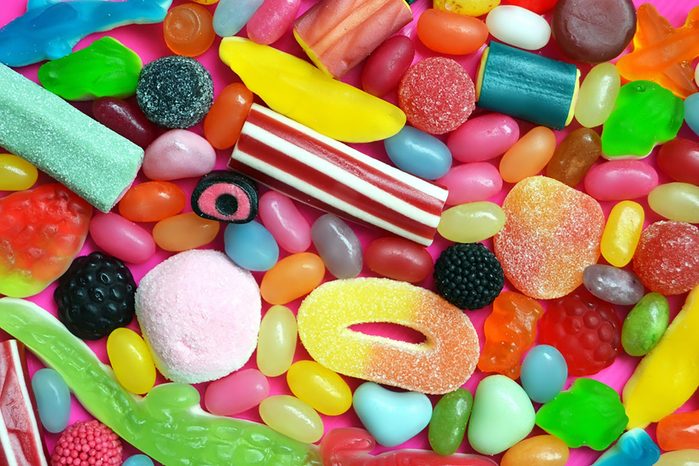
We love candy
The average American consumes 22 pounds of candy every year, much of it during the month of October and on Halloween, according to 2016 United States Census Bureau report. In fact, in 2018, Americans are expected to spend $2.6 billion on sweets for the spooky holiday, according to CandyStore.com.
Even though everyone knows candy isn’t good for you and that sugary snacks rot your teeth, it is simply not realistic that kids—or adults—will avoid the stuff. “Halloween is about candy and having fun,” says Ana Paula Ferraz-Dougherty, a dentist and spokesperson for the American Dental Association based in San Antonio, TX. “It’s ok to eat that candy as a splurge as long as you’re brushing twice a day and flossing once a day all year long.”
There are also things you can do to mitigate the damage when you do decide to indulge. San Francisco-based periodontist Terry Im, DDS, has a suggestion: “Brush your teeth before you eat candies to lower the bacteria in your mouth that feed on sugar. And rinse your mouth with water after you have sugar.” He recommends against vigorously brushing right after eating sugar since you need to give your teeth a chance to recover from the sugar and acids. And you can do your smile a favor by choosing the treats that are easier on your chompers and avoiding the ones that aren’t, starting with:
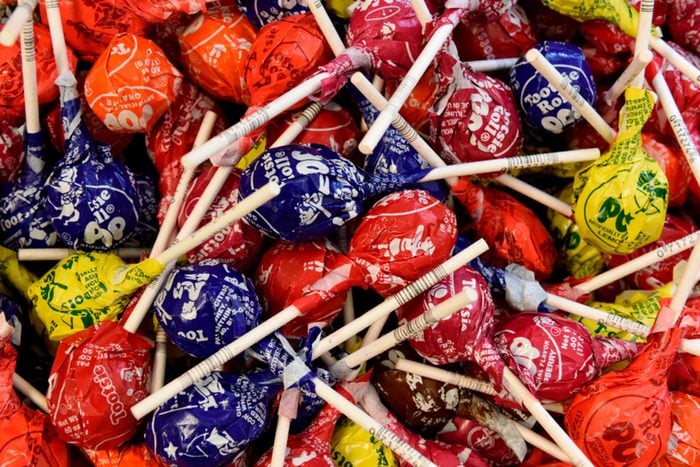
Worst: Lollipops and jawbreakers
Time is money—and that’s definitely true when it comes to candy that requires extended time in your mouth. With treats like Dum Dums, Atomic Fireballs, and Gobstoppers, the time it takes to get through the candy will translate to money you’ll have to spend in your dentist’s office down the road. Edward J. Zuckerberg, DDS, who practiced for 32 years in New York before moving his practice to Silicon Valley (he’s Facebook founder Mark Zuckerberg’s father) explains that prolonged exposure to sugar—and an increased acidic environment in your mouth—can worsen damage to your teeth. “Candies that stay in the mouth longer—like a giant lollipop—are the worst,” he warns. To trick your family and yourself into a healthier holiday, don’t miss these Halloween diet hacks.
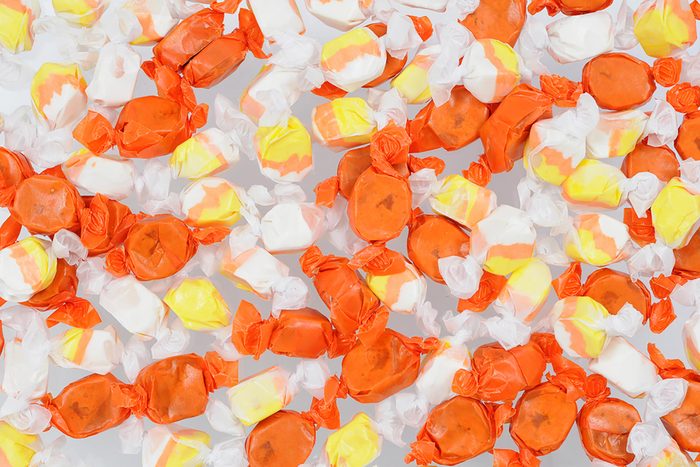
Worst: Sticky candy and taffy
Prolonged exposure to acidity and sugar causes cavities. “Anything sticky that lingers has the double whammy of being sugary and staying in the mouth for a long time,” warns Dr. Zuckerberg. This includes things like Sugar Daddies, Laffy Taffy, Abba-Zaba, or Airheads. He adds that sticky candy lovers need to be even bigger sticklers about daily flossing. “Flossing is very important to remove bits of candy stuck between the teeth.” If you have trouble getting your kids to floss regularly, he recommends Flosstime‘s animal snap-on floss wall holders that are a “fun reminder to floss every night.”
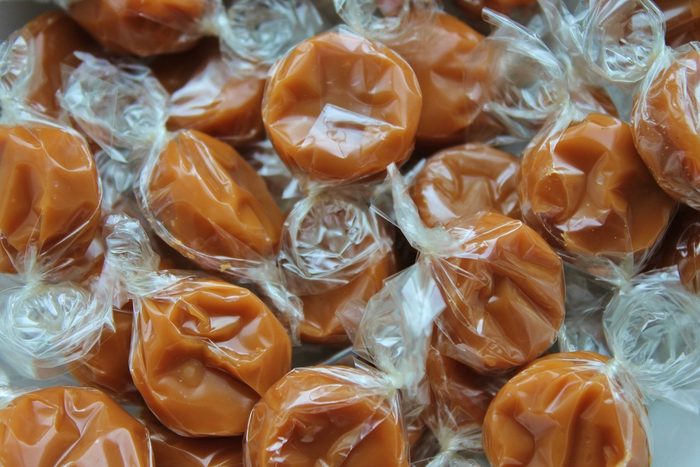
Worst: Caramels
These soft and delicious treats have a bad habit of wedging themselves in between teeth for hours. “That allows bacteria to feed off the sugar longer, therefore increasing the amount of time the tooth is under attack,” explains Daniel Klauer, DDS, author of Achieve Your Victory: Solutions for TMD and Sleep Apnea.
They can also be problematic for people with braces, fillings or other corrective measures. “Highly sticky or chewy stuff like caramels can pull out dental work. Avoid them even more during the first 24 hours of getting a dental filling,” says Puerto Rico dentist Ramon A. Duran, DDS, who recently authored Your Best Smile … For A Lifetime: Achieving Your Optimal Oral Health.
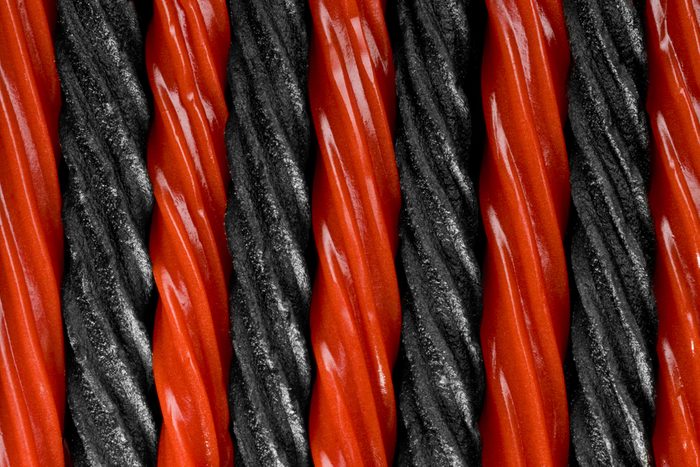
Worst: Gummies and licorice
Uh oh, the dentists have bad news for fans of chewable bears, worms, starfish, rings, Twizzlers, and Red Vines. “Gummy candies and licorice are very sticky sugars,” says Michael Messina, DDS, a Columbus, OH dentist and ADA consumer adviser. “They would not be my preference as they are more difficult to brush off of the teeth.” Find out the Halloween treats nutritionists secretly love.
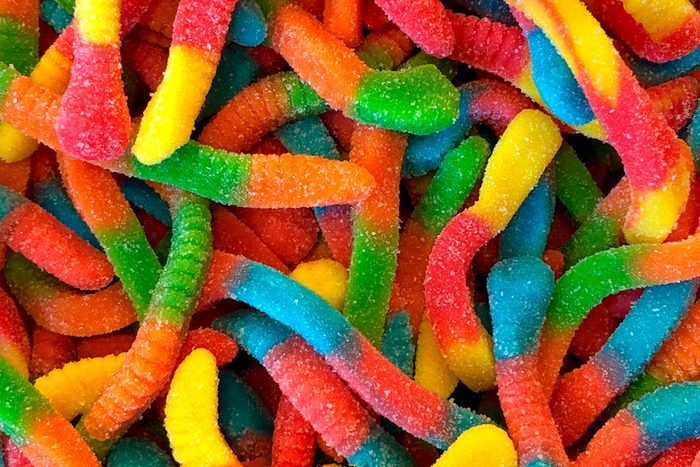
Worst: Sour candy
All of the dentists we interviewed advised people to pass on candy that makes people pucker up, such as Sour Patch Kids, Zotz, or X-TREME Sour Smarties. Dr. Klauer explains: “Foods and drinks that contain sugar and rate low on the pH scale form a perfect storm when it comes to causing tooth decay.” (The lower the pH, the more acidic something is). “Tooth demineralization of enamel can begin at a pH of 5.5. Many sour candies have a pH of less than 2.5! This is more frightening than a Michael Myers appearance on Halloween night.”
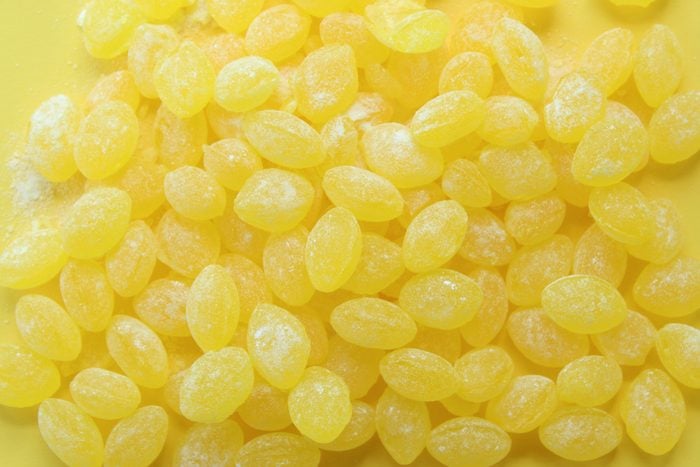
Worst: Citrus-flavored candy
For the same reasons that sour candy should be limited or avoided, citrus-flavored goodies like Lemonheads, Dubble Bubble pink lemonade gumballs, or orange Pez, says Dr. Im. He emphasizes that snacks that contain both sugar and acid are “really bad because acids demineralize the teeth surface. Sugars are infested by bacteria and acids are formed. But if acid is already in the food, it’s a double whammy. That’s why sucking on a lemon is bad for you: Even though it has very little sugar, the acidity is hard on your teeth.”
Dr. Duran also notes that the gritty coating found on many sour and citrus flavored candies can also be dangerous to tooth health. “Anything abrasive, used in excess, will cause more wear to teeth,” he says.
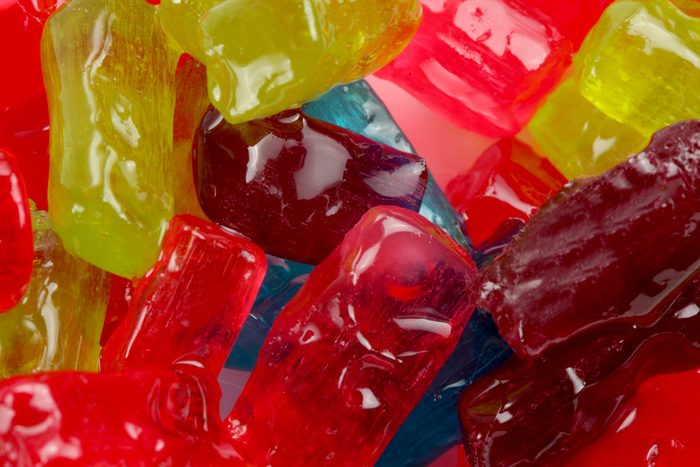
Worst: Hard candy
Be careful when biting into things like rock candy, Jolly Ranchers, Root Beer Barrels, or Bottlecaps. “They can actually break your teeth if you’re not careful,” Dr. Ferraz-Dougherty warns. The harder the candy, the more likely the teeth can damage when chewing. Enamel, the protective outer layer of the tooth, can fracture. See what 100 calories of your favorite Halloween candy looks like.
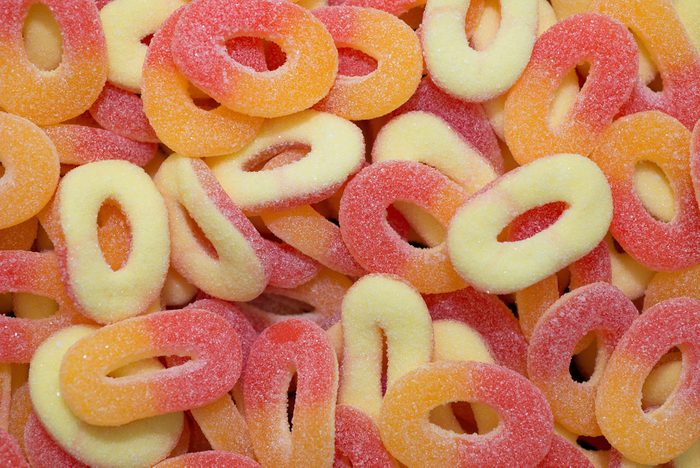
Best: Sugar-free candy
“The higher the sugar content, the worse for the teeth—period,” says Dr. Klauer. “You want to limit your sugar intake for overall health.” So: If you are going to indulge, choose sugar-free options like candy sweetened with xylitol (a naturally occurring sugar-free sweetener). Dr. Zuckerberg suggests still practicing moderation. “Even sugar-free candies that are in the mouth for a long time can be bad due to pH changes.” Don’t miss the most popular Halloween candy in your state.
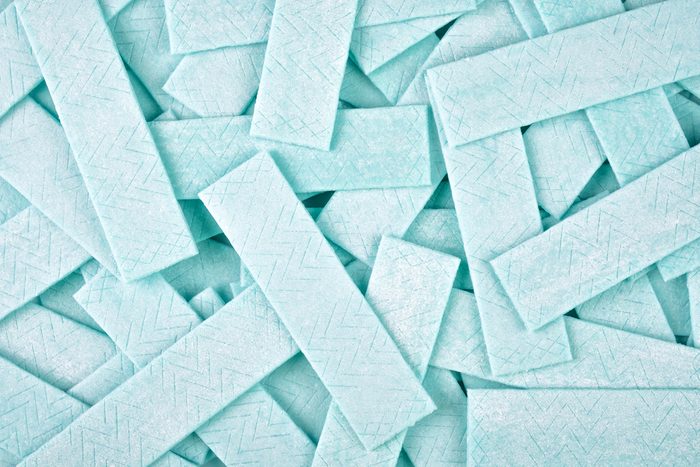
Best: Sugar-free gum
Gum, in small doses, can be helpful, according to Dr. Zuckerberg. “Sugar-free gum can have a beneficial detergent effect,” he says, but only chew it for a minute or so—otherwise, it can lower the pH in your mouth.
Moderation is key. Dr. Duran says: “It will help remove particles and neutralize some of the bacteria activity thanks to the increase in salivary flow. But don’t abuse chewing gum because you are over-exercising your jaw and muscles.”
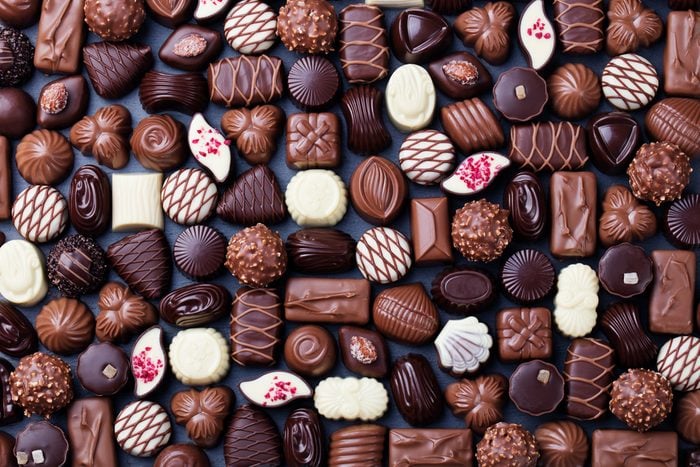
Best: Chocolate
Most of the dentists we interviewed agreed that chocolate is the lesser of many evils simply because it melts in the mouth quickly and washes off teeth very easily. Dr. Duran recommends going with dark chocolate to make it an even smarter option. “Dark chocolate has less sugar. Also, the antioxidants in cacao will act as a sort of antibacterial compound and could have some other overall health benefits,” he says. “The higher the cacao percentage, the healthier it will be.” Check out these healthy new types of chocolate.
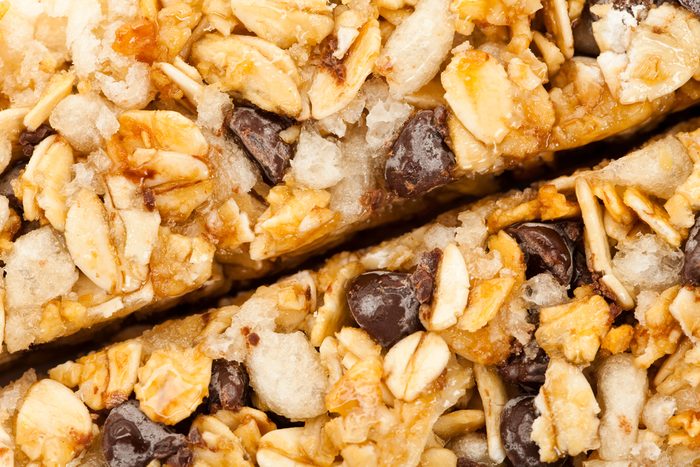
Best: Granola bars and trail mix
If you get a brand that uses healthier ingredients like yogurt nibs, almonds, oats, coconut, or dark chocolate chips, mini granola bars or mini bags of trail mix can be easier on the teeth. But Dr. Klauer, who specializes in craniofacial pain, TMD, and sleep breathing disorders, reminds people to make sure the bars or mix isn’t too sticky or chewy: “They can exacerbate existing jaw-joint issues. Many people aren’t aware that they may have a TMJ problem so this could be like putting gas on a fire.”
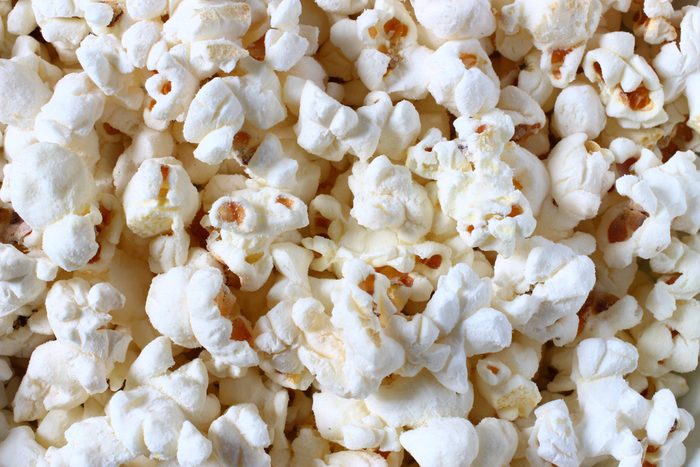
Best: Popcorn
Popcorn could actually fall into both categories: It does not cause cavities and can be a good source of fiber. However, says Dr. Im: “It is the leading cause of a gingival abscess. The shell gets trapped under the gum line and causes an infection until it comes out or is removed.” Check out 9 reasons eating popcorn can be good for you.
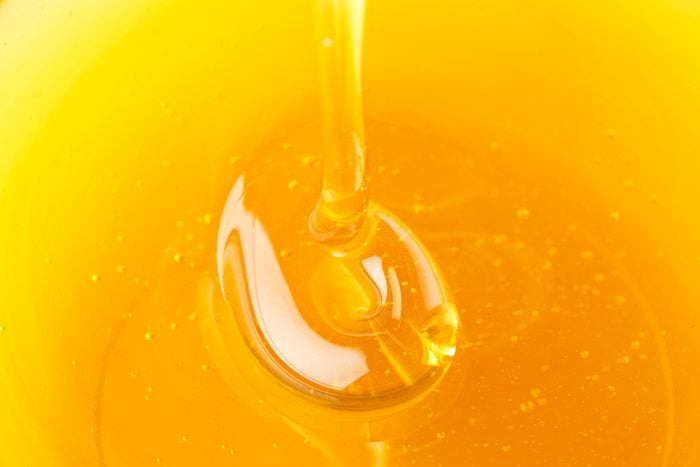
Best: Honey sticks
Dr. Klauer thinks these are OK: “Honey provides nutritional value including antioxidants.” But the honey shouldn’t be processed, and it’s still only healthy in small amounts. And no child under a year of age should eat honey. To be green, try to find sticks with BPA-free, compostable, or biodegradable packaging.
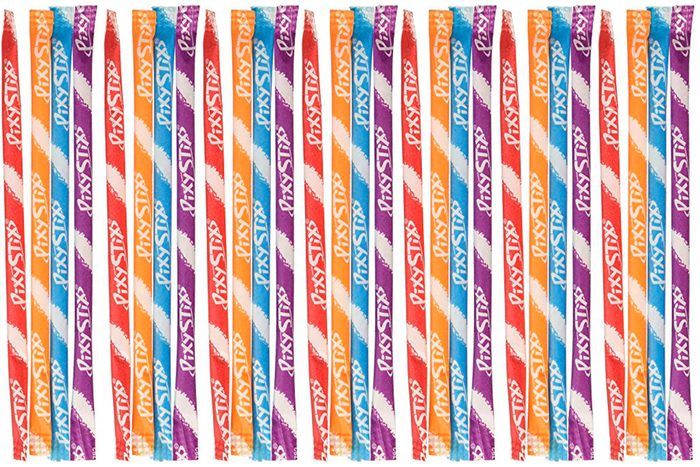
Best: Pixie Stix
Yes—Pixie Stix are devoid of any nutritional benefit and have a high sugar content. But Dr. Messina says they’re an OK pick because they won’t linger in the mouth and a rinse will clear the teeth.
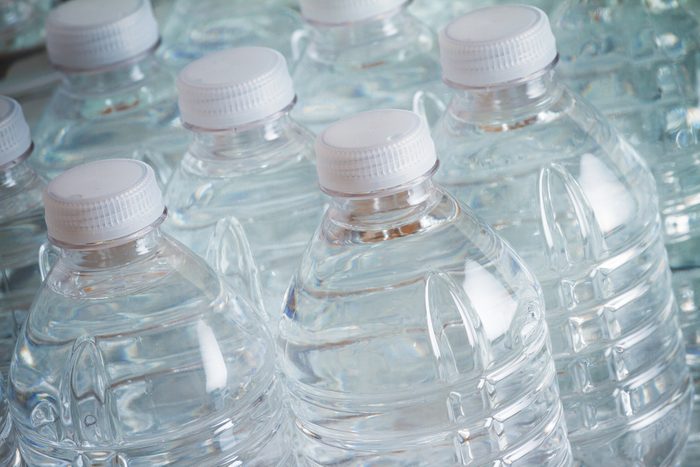
Best: Bottled water
You might be setting your house up for an egging, but passing out mini water bottles is the best thing you can do for the dental health of your neighborhood’s children. They can stay hydrated and rinse their mouths of sugar between trick-or-treat stops. “To counterbalance high levels of acid in kid’s saliva, make sure they drink lots of water,” Dr. Zuckerburg says. Check out some other healthy Halloween swaps.
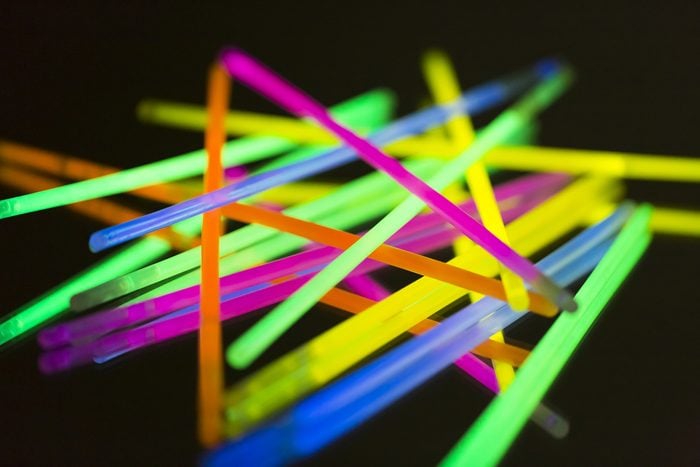
Best: Toys, school supplies, stickers, glow sticks, etc.
Obviously, the least destructive treats are the ones that don’t go in the mouths (or shouldn’t): Play-Doh, pencils, small rubber balls, key chains, pocket games, plastic figures, bubbles, stickers, coloring books, crayons, glow sticks, chalk, fidget spinners, finger monsters, Legos, gliders, or erasers. Most can be found at your local party supply store. “We usually do candy, but one year we got party favors and it was such a hit with trick-or-treaters,” says Dr. Zuckerberg. “It’s nice to stand out, but never give toothbrushes or floss. You will get egged!”
After a few days, the novelty of the candy should wear off, says Dr. Zuckerberg. “Donate the leftovers to the needy or troops overseas through Operation Gratitude. Or try some of these other clever uses for leftover candy.
